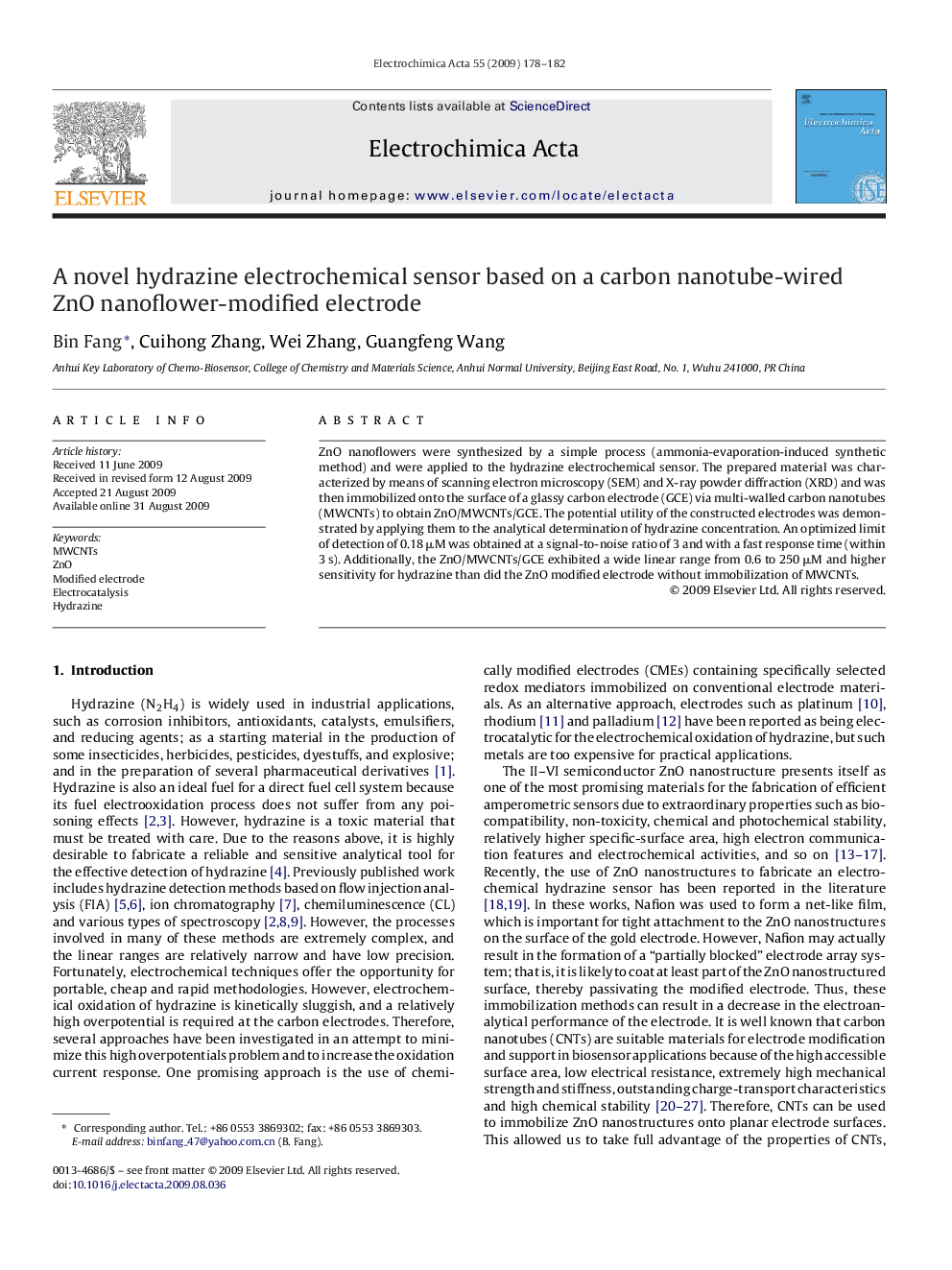| Article ID | Journal | Published Year | Pages | File Type |
|---|---|---|---|---|
| 191489 | Electrochimica Acta | 2009 | 5 Pages |
ZnO nanoflowers were synthesized by a simple process (ammonia-evaporation-induced synthetic method) and were applied to the hydrazine electrochemical sensor. The prepared material was characterized by means of scanning electron microscopy (SEM) and X-ray powder diffraction (XRD) and was then immobilized onto the surface of a glassy carbon electrode (GCE) via multi-walled carbon nanotubes (MWCNTs) to obtain ZnO/MWCNTs/GCE. The potential utility of the constructed electrodes was demonstrated by applying them to the analytical determination of hydrazine concentration. An optimized limit of detection of 0.18 μM was obtained at a signal-to-noise ratio of 3 and with a fast response time (within 3 s). Additionally, the ZnO/MWCNTs/GCE exhibited a wide linear range from 0.6 to 250 μM and higher sensitivity for hydrazine than did the ZnO modified electrode without immobilization of MWCNTs.
